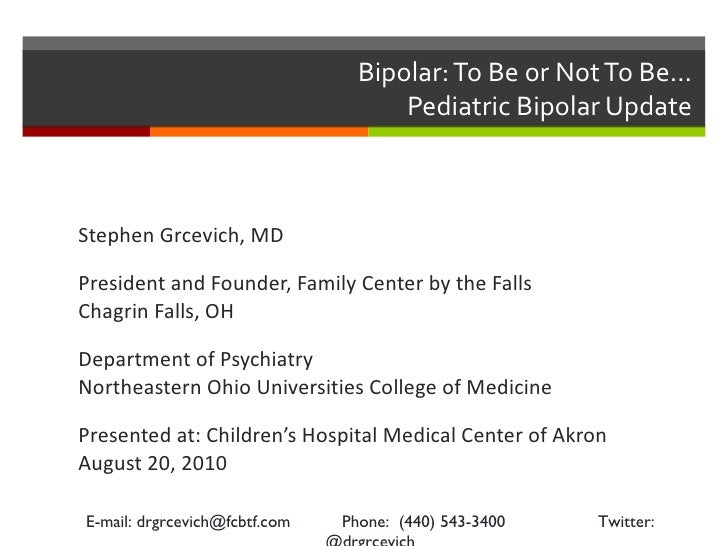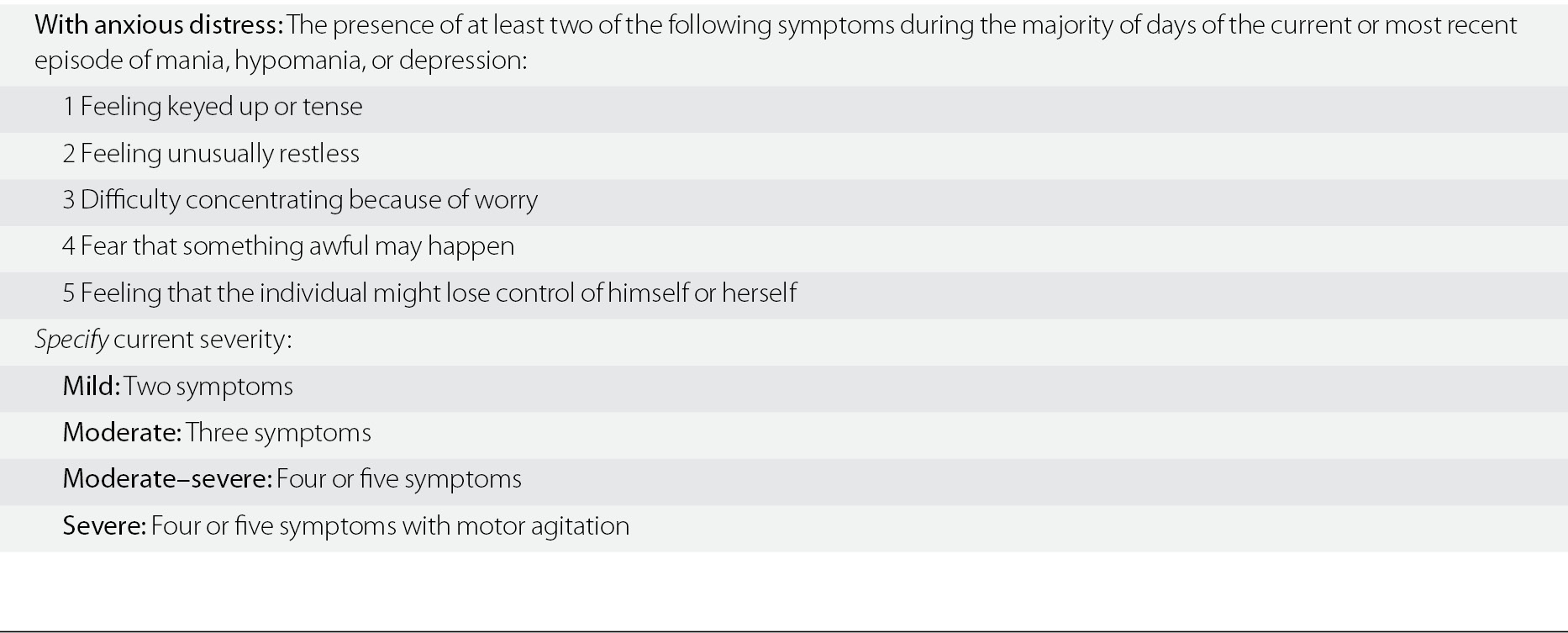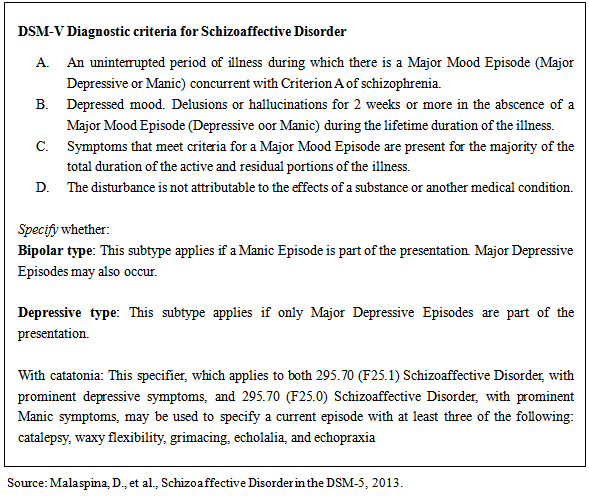Your Bipolar 1 disorder dsm 5 images are ready in this website. Bipolar 1 disorder dsm 5 are a topic that is being searched for and liked by netizens today. You can Find and Download the Bipolar 1 disorder dsm 5 files here. Get all royalty-free images.
If you’re searching for bipolar 1 disorder dsm 5 pictures information linked to the bipolar 1 disorder dsm 5 interest, you have pay a visit to the ideal site. Our site frequently gives you suggestions for viewing the highest quality video and image content, please kindly surf and find more informative video content and images that fit your interests.
Bipolar 1 Disorder Dsm 5. Bipolar disorder is a category that includes three different condition bipolar I bipolar II and. Bipolar I disorder pronounced bipolar one and also known as manic-depressive disorder or manic depression is a form of mental illness. Both classifications discriminate between bipolar disorder and unipolar depression but represent this in different ways. DSM-5 summarizes bipolar and related disorders in one chapter while ICD-10 puts them in the chapters of mood affective disorders behavioral disorders due to psychoactive substance use and organic mood affective disorder.
 The Bipolar Spectrum Chapter 3 Bipolar Ii Disorder From cambridge.org
The Bipolar Spectrum Chapter 3 Bipolar Ii Disorder From cambridge.org
Pronounced type one bipolar disorder is a type of bipolar spectrum disorder characterized by the occurrence of at least one manic episode with or without mixed or psychotic features. Bipolar I Disorder Definition and DSM-5 Criteria To be diagnosed with bipolar disorder type I the person must have experienced at least one period of mania and at least one period of depression as defined in the Diagnostic and Statistical Manual of. During the period of mood disturbance and increased energy or activity 3 or more of the following symptoms 4 if the mood is only irritable are present to a significant degree and represent a noticeable change from usual behavior. For a diagnosis of bipolar I disorder it is necessary to meet the following criteria for a manic episode. Bipolar Disorders biPolar i disorder. Criteria except for duration are currently or most recently met for a manic a hypomanic a mixed or a major depressive episode.
In the bipolar disorder DSM-5 versus DSM-IV Criterion A is revised to include increased energyactivity as a core symptom B.
Bipolar Disorder DSM 5 Criteria. Since the DSM-5 was published in 2013 updates have been made to the codes for bipolar I and bipolar II disorders. Both classifications discriminate between bipolar disorder and unipolar depression but represent this in different ways. A person affected by bipolar. Bipolar Disorder 1 Bipolar Disorder According to the DSM-5 Marcia Roberts Advanced Psychopathology Walden University November 10 2014 Running head. Bipolar I disorder pronounced bipolar one and also known as manic-depressive disorder or manic depression is a form of mental illness.
 Source: slideplayer.com
Source: slideplayer.com
What Is Bipolar I Disorder. A person affected by bipolar. For a diagnosis of bipolar I disorder it is necessary to meet the following criteria for a manic episode. Bipolar Disorder DSM-5 Diagnostic Criteria To be diagnosed with bipolar disorder a person must have experienced at least one episode of mania or hypomania. Pronounced type one bipolar disorder is a type of bipolar spectrum disorder characterized by the occurrence of at least one manic episode with or without mixed or psychotic features.
 Source: researchgate.net
Source: researchgate.net
After a long period of revisions and adaptation the ICD-10 coding system replaced. What Is Bipolar Disorder. In the bipolar disorder DSM-5 versus DSM-IV Criterion A is revised to include increased energyactivity as a core symptom B. Bipolar Disorder DSM-5 Diagnostic Criteria To be diagnosed with bipolar disorder a person must have experienced at least one episode of mania or hypomania. Pronounced type one bipolar disorder is a type of bipolar spectrum disorder characterized by the occurrence of at least one manic episode with or without mixed or psychotic features.
 Source: cambridge.org
Source: cambridge.org
In the bipolar disorder DSM-5 versus DSM-IV Criterion A is revised to include increased energyactivity as a core symptom B. Bipolar I Disorder Definition and DSM-5 Criteria To be diagnosed with bipolar disorder type I the person must have experienced at least one period of mania and at least one period of depression as defined in the Diagnostic and Statistical Manual of. Bipolar disorder is a category that includes three different condition bipolar I bipolar II and. Bipolar disorders in DSM-5. A person affected by bipolar.
 Source: slideshare.net
Source: slideshare.net
Bipolar disorder is a category that includes three different condition bipolar I bipolar II and. The manic episode may have been preceded by and may be followed by hypomanic or. In the first edition of the DSM Diagnostic And Statistical Manual of Mental Disorders bipolar disorder was referred to as manic depressive illness and was later renamed bipolar disorder in the DSM-III because of the stigma attached to mania and an attempt to describe and focus on the polarity between the two different symptom patterns of depression and mania. Bipolar Disorder DSM 5 Criteria. There has previously been at least one manic episode or mixed episode.
 Source: psychscenehub.com
Source: psychscenehub.com
In the first edition of the DSM Diagnostic And Statistical Manual of Mental Disorders bipolar disorder was referred to as manic depressive illness and was later renamed bipolar disorder in the DSM-III because of the stigma attached to mania and an attempt to describe and focus on the polarity between the two different symptom patterns of depression and mania. Bipolar disorders in DSM-5. Bipolar Disorders biPolar i disorder. The manic episode may have been preceded by and may be followed by hypomanic or. Bipolar I Disorder Definition and DSM-5 Criteria To be diagnosed with bipolar disorder type I the person must have experienced at least one period of mania and at least one period of depression as defined in the Diagnostic and Statistical Manual of.
 Source: europepmc.org
Source: europepmc.org
In DSM-5 bipolar and related disorders as they are now called are given a chapter on their own between depressive disorders and schizophrenia spectrum disorders that includes bipolar I disorder which represents according to DSM-5 classic manic depressive disorder with the exception that neither a depressive episode nor psychosis has to be present for diagnosis. In DSM-5 bipolar and related disorders as they are now called are given a chapter on their own between depressive disorders and schizophrenia spectrum disorders that includes bipolar I disorder which represents according to DSM-5 classic manic depressive disorder with the exception that neither a depressive episode nor psychosis has to be present for diagnosis. DSM-5 summarizes bipolar and related disorders in one chapter while ICD-10 puts them in the chapters of mood affective disorders behavioral disorders due to psychoactive substance use and organic mood affective disorder. Bipolar Disorders biPolar i disorder. Bipolar disorder is a brain disorder that causes changes in a persons mood energy and ability to function.
 Source: semanticscholar.org
Source: semanticscholar.org
Bipolar disorder is a brain disorder that causes changes in a persons mood energy and ability to function. Bipolar I Disorder Definition and DSM-5 Criteria To be diagnosed with bipolar disorder type I the person must have experienced at least one period of mania and at least one period of depression as defined in the Diagnostic and Statistical Manual of. Bipolar disorders are described by the American Psychiatric Associations Diagnostic and Statistical Manual of Mental Disorders DSM-5 as a group of brain disorders that cause extreme fluctuation in a persons mood energy and ability to function. Bipolar disorder is a brain disorder that causes changes in a persons mood energy and ability to function. Bipolar disorder is a complex mental health condition characterized by severe shifts in mood accompanied by changes in energy and activity levels.
Source: ncbi.nlm.nih.gov
Bipolar I Disorder Definition and DSM-5 Criteria To be diagnosed with bipolar disorder type I the person must have experienced at least one period of mania and at least one period of depression as defined in the Diagnostic and Statistical Manual of. The manic episode may have been preceded by and may be followed by hypomanic or. For a diagnosis of bipolar I disorder it is necessary to meet the following criteria for a manic episode. Pronounced type one bipolar disorder is a type of bipolar spectrum disorder characterized by the occurrence of at least one manic episode with or without mixed or psychotic features. Diagnosis And Treatment Options.
 Source: slidetodoc.com
Source: slidetodoc.com
Bipolar Disorder 2 Abstract Manic episodes that are not caused by drugs or other substances and depressive symptoms including despair withdrawal and uncontrollable crying are characteristic of Bipolar Disorder. Bipolar disorders are described by the American Psychiatric Associations Diagnostic and Statistical Manual of Mental Disorders DSM-5 as a group of brain disorders that cause extreme fluctuation in a persons mood energy and ability to function. A person affected by bipolar. Bipolar I disorder BD-I. DSM-5 summarizes bipolar and related disorders in one chapter while ICD-10 puts them in the chapters of mood affective disorders behavioral disorders due to psychoactive substance use and organic mood affective disorder.
 Source: slideshare.net
Source: slideshare.net
DSM-5 summarizes bipolar and related disorders in one chapter while ICD-10 puts them in the chapters of mood affective disorders behavioral disorders due to psychoactive substance use and organic mood affective disorder. The manic episode may have been preceded by and may be followed by hypomanic or. Bipolar I disorder BD-I. Bipolar disorders are described by the American Psychiatric Associations Diagnostic and Statistical Manual of Mental Disorders DSM-5 as a group of brain disorders that cause extreme fluctuation in a persons mood energy and ability to function. Bipolar disorder is a complex mental health condition characterized by severe shifts in mood accompanied by changes in energy and activity levels.
 Source: researchgate.net
Source: researchgate.net
What Is Bipolar I Disorder. Bipolar disorder is a brain disorder that causes changes in a persons mood energy and ability to function. The manic episode may have been preceded by and may be followed by hypomanic or. Presence of five of nine diagnostic symptoms with a minimum duration of 2 weeks and a change from previous functioning. Bipolar Disorders biPolar i disorder.
 Source: psychologytools.com
Source: psychologytools.com
A person affected by bipolar. Diagnosis And Treatment Options. Bipolar Disorder DSM 5 Criteria. Bipolar Disorder 1 Bipolar Disorder According to the DSM-5 Marcia Roberts Advanced Psychopathology Walden University November 10 2014 Running head. Criteria except for duration are currently or most recently met for a manic a hypomanic a mixed or a major depressive episode.
 Source: researchgate.net
Source: researchgate.net
Presence of five of nine diagnostic symptoms with a minimum duration of 2 weeks and a change from previous functioning. Bipolar I Disorder Most Recent Episode Unspecified. Bipolar disorders in DSM-5. Criteria except for duration are currently or most recently met for a manic a hypomanic a mixed or a major depressive episode. The main lines of the DSM-5 definition of major depressive episodes MDE basic to the diagnoses of both bipolar I and bipolar II disorders are similar to those of DSM-IV.
 Source: journal-psychoanalysis.eu
Source: journal-psychoanalysis.eu
Bipolar I Disorder Definition and DSM-5 Criteria To be diagnosed with bipolar disorder type I the person must have experienced at least one period of mania and at least one period of depression as defined in the Diagnostic and Statistical Manual of. Bipolar disorder is a category that includes three different condition bipolar I bipolar II and. Bipolar Disorder DSM 5 Criteria. For a diagnosis of bipolar I disorder it is necessary to meet the following criteria for a manic episode. People with bipolar disorder experience intense emotional states that typically occur during distinct periods of days to weeks called mood episodes.
 Source: psychscenehub.com
Source: psychscenehub.com
There has previously been at least one manic episode or mixed episode. Bipolar disorders in DSM-5. Diagnosis And Treatment Options. The main lines of the DSM-5 definition of major depressive episodes MDE basic to the diagnoses of both bipolar I and bipolar II disorders are similar to those of DSM-IV. The manic episode may have been preceded by and may be followed by hypomanic or.
 Source: cambridge.org
Source: cambridge.org
In the first edition of the DSM Diagnostic And Statistical Manual of Mental Disorders bipolar disorder was referred to as manic depressive illness and was later renamed bipolar disorder in the DSM-III because of the stigma attached to mania and an attempt to describe and focus on the polarity between the two different symptom patterns of depression and mania. There has previously been at least one manic episode or mixed episode. Bipolar I Disorder Definition and DSM-5 Criteria To be diagnosed with bipolar disorder type I the person must have experienced at least one period of mania and at least one period of depression as defined in the Diagnostic and Statistical Manual of. Bipolar Disorders biPolar i disorder. After a long period of revisions and adaptation the ICD-10 coding system replaced.
 Source: article.sapub.org
Source: article.sapub.org
After a long period of revisions and adaptation the ICD-10 coding system replaced. Bipolar disorder is a brain disorder that causes changes in a persons mood energy and ability to function. The manic episode may have been preceded by and may be followed by hypomanic or. In the first edition of the DSM Diagnostic And Statistical Manual of Mental Disorders bipolar disorder was referred to as manic depressive illness and was later renamed bipolar disorder in the DSM-III because of the stigma attached to mania and an attempt to describe and focus on the polarity between the two different symptom patterns of depression and mania. Bipolar Disorder 1 Bipolar Disorder According to the DSM-5 Marcia Roberts Advanced Psychopathology Walden University November 10 2014 Running head.
 Source: semanticscholar.org
Source: semanticscholar.org
The main lines of the DSM-5 definition of major depressive episodes MDE basic to the diagnoses of both bipolar I and bipolar II disorders are similar to those of DSM-IV. Since the DSM-5 was published in 2013 updates have been made to the codes for bipolar I and bipolar II disorders. Both classifications discriminate between bipolar disorder and unipolar depression but represent this in different ways. What Is Bipolar Disorder. Criteria except for duration are currently or most recently met for a manic a hypomanic a mixed or a major depressive episode.
This site is an open community for users to do submittion their favorite wallpapers on the internet, all images or pictures in this website are for personal wallpaper use only, it is stricly prohibited to use this wallpaper for commercial purposes, if you are the author and find this image is shared without your permission, please kindly raise a DMCA report to Us.
If you find this site good, please support us by sharing this posts to your own social media accounts like Facebook, Instagram and so on or you can also save this blog page with the title bipolar 1 disorder dsm 5 by using Ctrl + D for devices a laptop with a Windows operating system or Command + D for laptops with an Apple operating system. If you use a smartphone, you can also use the drawer menu of the browser you are using. Whether it’s a Windows, Mac, iOS or Android operating system, you will still be able to bookmark this website.






